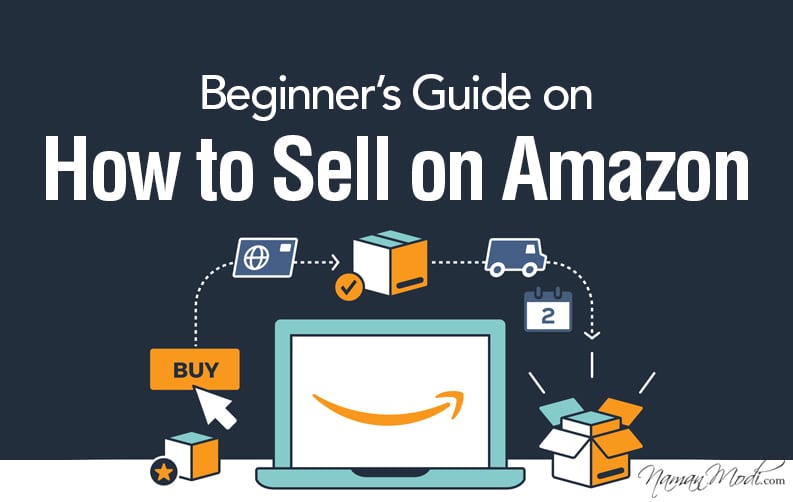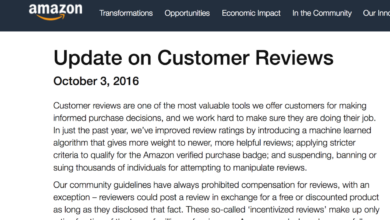
Amazon Selling Tips Maximize Your Profits
Tips for selling on Amazon are crucial for success. This guide dives deep into various aspects, from optimizing your product listings to mastering pricing strategies, inventory management, marketing, customer service, and understanding Amazon policies. Learn how to leverage Amazon tools and resources to boost your sales and achieve profitability.
We’ll explore key strategies for crafting compelling product descriptions, optimizing images, and choosing effective pricing models. Understanding inventory management and marketing techniques will also be covered. Ultimately, we aim to provide a comprehensive toolkit for anyone looking to thrive on the Amazon marketplace.
Pricing Strategies
Pricing effectively is crucial for maximizing profits on Amazon. A well-defined pricing strategy considers factors like your product’s cost, competitor analysis, and market demand. This section will explore various pricing models and provide actionable steps to implement them successfully.Pricing on Amazon requires more than just setting a price; it demands a dynamic approach that adapts to changing market conditions.
Effective pricing involves understanding the intricate interplay between your costs, the prices of competitors, and customer demand.
Competitive Pricing
Competitive pricing involves setting your product price based on the prices of similar products offered by your competitors on Amazon. This approach allows you to remain competitive in the market while ensuring your pricing aligns with customer expectations. It’s important to thoroughly research competitors’ offerings, considering factors such as product features, quality, and brand reputation, to accurately gauge your competitive position.
Identifying the sweet spot that balances affordability and desirability is paramount.
Cost-Plus Pricing
Cost-plus pricing is a straightforward approach where you calculate the total cost of producing a product and add a predetermined markup to arrive at the selling price. This method ensures you cover your costs and generate a profit margin. The markup percentage can be adjusted based on your target profit margin and market analysis. A key element in this approach is accurately determining all associated costs, including production, shipping, and overhead.
Value-Based Pricing
Value-based pricing focuses on the perceived value of your product to the customer. It considers factors like quality, features, and brand reputation. By highlighting these attributes, you can justify a higher price than competitors offering similar products. This strategy is particularly effective for niche products or those with unique selling propositions. Examples include high-quality handmade goods or products with strong brand recognition.
Pricing Tools on Amazon
Amazon provides several tools to help you monitor competitor pricing and track your own product performance. Utilizing these tools enables informed pricing decisions, allowing you to react quickly to market fluctuations and maintain competitiveness. The Amazon Seller Central dashboard offers various tools to help you monitor your product’s performance and track competitor prices.
Adjusting Prices Based on Demand and Sales Data
Analyzing sales data and demand trends is vital for making informed pricing adjustments. Sales data reveals customer response to different price points, allowing for dynamic adjustments that maximize profitability. A successful pricing strategy must be adaptable. Monitoring sales trends, analyzing competitor actions, and observing customer reviews provide invaluable insights for adjusting pricing strategies. Tools such as Amazon’s sales reports and competitor analysis tools are crucial in this process.
Pricing Strategies for Different Product Types
Different product types respond differently to various pricing strategies. For example, high-demand, low-cost items might benefit from competitive pricing, while unique or high-quality items may leverage value-based pricing. A carefully considered approach is vital to ensuring your pricing strategy aligns with the specific characteristics of your product.
Comparison of Pricing Strategies
| Pricing Strategy | Pros | Cons |
|---|---|---|
| Competitive Pricing | Maintains market competitiveness; easy to implement | May not maximize profit margins; vulnerable to competitor price fluctuations |
| Cost-Plus Pricing | Simple and straightforward; ensures cost coverage | May not reflect market value; potentially undervalue product |
| Value-Based Pricing | Maximizes profit potential; positions product as premium | Requires strong value proposition; challenging to implement effectively |
Inventory Management: Tips For Selling On Amazon
Effective inventory management is crucial for success on Amazon. Poor inventory control can lead to lost sales due to stockouts, increased storage costs, and potential damage to your brand reputation. A well-managed inventory system ensures you meet customer demand while minimizing waste and maximizing profitability. This section explores strategies to optimize your inventory, from forecasting demand to leveraging automation.
Demand Forecasting and Stock Optimization
Accurate demand forecasting is essential for maintaining optimal stock levels. This involves analyzing historical sales data, considering seasonal trends, and factoring in external factors like promotions or competitor activities. A robust forecasting method allows you to anticipate future demand and adjust your stock levels proactively. This prevents overstocking, which ties up capital, and understocking, which results in lost sales.
For example, if you sell winter jackets, you would expect a spike in demand during the colder months and potentially lower demand during the summer months. You can use this knowledge to adjust your stock levels accordingly.
Inventory Management Software
Choosing the right inventory management software can streamline your operations and enhance efficiency. Different software options cater to various needs and budgets. Below is a table comparing common inventory management software solutions. This table provides a starting point for evaluating software that aligns with your specific business needs.
| Software | Features | Pricing | Pros | Cons |
|---|---|---|---|---|
| Shopify | Order management, inventory tracking, reporting, and more | Variable, based on plan | Easy to use, integrates with other Shopify features | May not be ideal for complex inventory needs |
| WooCommerce | Handles orders, manages inventory, and provides reporting | Free/variable, based on extensions | Cost-effective, flexible, and customizable | Requires technical expertise to set up and maintain |
| Amazon Seller Central | Manage listings, orders, and inventory within the Amazon platform | Free (part of the Amazon Seller platform) | Integrated with Amazon’s ecosystem | Limited customization and features compared to third-party software |
| Zoho Inventory | Comprehensive inventory management, including forecasting, reporting, and more | Variable, based on plan | Powerful features for advanced inventory management | Steeper learning curve for beginners |
Real-Time Inventory Tracking
Real-time inventory tracking is vital for effective inventory management. By monitoring inventory levels continuously, you can respond swiftly to fluctuations in demand, preventing stockouts and ensuring timely order fulfillment. This constant monitoring allows for proactive adjustments to inventory levels, which reduces the risk of losing sales due to shortages. For example, if a product is selling faster than expected, you can replenish stock quickly, ensuring customer satisfaction.
Avoiding Overstocking and Understocking
Overstocking and understocking are common inventory management pitfalls. Overstocking ties up capital, increases storage costs, and potentially leads to product obsolescence. Understocking, on the other hand, leads to lost sales and frustrated customers. To mitigate these risks, you must balance inventory levels with forecasted demand. Monitoring sales trends and using historical data are critical steps in preventing these problems.
Looking for ways to boost your Amazon sales? Knowing how Google is changing the game with YouTube, like in this recent report about report google turning youtube into a shopping site , is crucial. It’s clear that video marketing is becoming increasingly important. This shift highlights the need for sellers to adapt their strategies, focusing on compelling product demos and reviews on platforms like YouTube, to stay ahead of the curve.
High-quality product listings and effective keyword research remain vital Amazon selling strategies, though.
Automation in Inventory Management
Automation plays a significant role in streamlining inventory management. Automated systems can track inventory levels in real-time, automatically trigger reordering when stock reaches a certain threshold, and generate reports on inventory performance. By automating these tasks, you free up time and resources to focus on other aspects of your business. For example, automated reordering systems can prevent stockouts by ensuring timely replenishment.
Marketing and Promotion
Amazon’s vast marketplace presents both opportunities and challenges for sellers. Effective marketing is crucial to stand out and drive sales. This section delves into strategies for maximizing your visibility and attracting customers on Amazon. A well-rounded approach encompassing Amazon’s tools, customer engagement, and promotional tactics will lead to sustainable growth.
Amazon Marketing Tools
Leveraging Amazon’s built-in marketing tools is essential for reaching a wider audience. These tools are designed to increase product visibility and enhance customer engagement. Understanding and strategically using these tools is paramount to achieving optimal results.Amazon offers a variety of tools to help sellers promote their products. These include Sponsored Products, Sponsored Brands, and Display Ads. Each tool has its own strengths and weaknesses, and the most effective strategy often involves a combination of approaches.
Sponsored Products
Sponsored Products ads appear above, beside, and below search results on Amazon. They’re highly targeted, showing your products to customers actively searching for items similar to yours. This targeted approach ensures your products are seen by relevant customers, maximizing your return on ad spend. By using relevant s and detailed product descriptions, sellers can optimize their campaigns for greater success.
Want to boost your Amazon sales? Beyond optimizing product listings, consider a strong B2B lead generation campaign, like the one detailed at b2b lead generation campaign. Focusing on building relationships with wholesalers and distributors can open doors to larger orders and increased visibility. This strategic approach, combined with solid Amazon selling techniques, can significantly enhance your overall Amazon presence.
Sponsored Brands
Sponsored Brands ads provide a broader reach, featuring your brand and multiple products within a single ad unit. This is ideal for establishing brand awareness and promoting a portfolio of products. This strategy works well for sellers looking to build a stronger brand identity.
Display Ads
Display ads can appear on other websites within the Amazon ecosystem or partner sites. This approach allows for broader exposure and reaching customers who may not be actively searching for specific products but are interested in related products or topics. These ads help sellers broaden their customer base.
Amazon Advertising Strategies, Tips for selling on amazon
Successful Amazon advertising requires careful planning and execution. A well-defined strategy is crucial for maximizing your return on investment. Implementing targeted campaigns, utilizing A/B testing, and monitoring performance are essential steps.
- Research: Thorough research is essential for identifying the terms customers use when searching for products like yours. Tools like Helium 10 can aid in this process.
- Budget Optimization: Managing your budget effectively is crucial. Start with a smaller budget and gradually increase it based on performance data. A/B testing different ad variations helps optimize spending.
- A/B Testing: Experiment with different ad creatives, headlines, and descriptions to determine what resonates most with customers. Monitor results and adjust your campaigns accordingly.
Customer Reviews and Feedback
Customer reviews are powerful marketing tools. Positive reviews build trust and credibility, while negative reviews provide valuable feedback. Actively engaging with customer feedback can significantly improve your marketing strategies.
- Respond to Reviews: Responding to both positive and negative reviews demonstrates that you value customer input. This interaction builds trust and rapport.
- Address Concerns: Negative reviews often highlight areas for improvement. Address concerns constructively and offer solutions to resolve issues.
- Encourage Reviews: Requesting reviews from satisfied customers is a simple way to boost your product visibility and build social proof.
Customer Engagement and Brand Loyalty
Building brand loyalty requires ongoing engagement with customers. Building strong relationships is key to long-term success. Regular communication and personalized interactions foster loyalty.
- Personalized Communication: Personalize your communications with customers. This shows that you value their business and are invested in their experience.
- Customer Support: Excellent customer service is essential for building loyalty. Address customer inquiries promptly and efficiently.
- Loyalty Programs: Consider implementing loyalty programs to reward repeat customers and encourage future purchases.
Effective Promotions
Running effective promotions on Amazon requires a strategic approach. Understanding the various promotional tools and their application is crucial for success.
- Flash Sales: Flash sales create a sense of urgency and can drive significant sales.
- Bundle Deals: Bundle deals offer customers value and can increase average order value.
- Discount Codes: Discount codes can incentivize purchases and attract new customers.
Customer Service and Feedback

Amazon sellers understand that customer satisfaction is paramount. A positive customer experience translates directly into repeat business and strong seller ratings. Excellent customer service isn’t just a good practice; it’s a crucial component of success on the Amazon marketplace. Ignoring customer issues can quickly lead to negative reviews, impacting your product visibility and sales. Therefore, a proactive and responsive approach to customer service is vital for sustained success.
Importance of Excellent Customer Service
A strong customer service reputation directly correlates with higher sales and positive feedback. Happy customers are more likely to repurchase and recommend your products to others. Amazon’s algorithm considers customer reviews and feedback, influencing search rankings and product visibility. A consistently positive customer experience significantly increases your chances of achieving a higher seller rating and greater success on the platform.
Handling Customer Inquiries and Complaints
Proactive communication is key to addressing customer inquiries and complaints effectively. Immediately acknowledging customer messages, even if you can’t resolve the issue immediately, demonstrates responsiveness. A structured approach involves clearly documenting all interactions, including details of the problem, the customer’s request, and your response. This record-keeping aids in identifying patterns and resolving similar issues in the future.
Maintaining detailed communication logs is a fundamental aspect of managing customer interactions effectively.
Responding to Negative Reviews
Negative reviews are inevitable, but they can be transformed into opportunities for improvement. Instead of dismissing them, acknowledge the customer’s concern and express your willingness to help. Personalize your response, demonstrating that you’ve taken the time to understand their specific issue. Offer a solution or a refund if appropriate. Demonstrating empathy and a genuine desire to resolve the problem can turn a negative experience into a positive one.
By proactively addressing negative feedback, you demonstrate your commitment to customer satisfaction.
Collecting and Analyzing Customer Feedback
Gathering customer feedback is essential for understanding your customers’ needs and preferences. Utilize Amazon’s built-in feedback mechanisms, such as review responses and seller surveys. Regularly review customer reviews and comments, identifying recurring themes or concerns. Analyzing this feedback provides valuable insights into areas for product improvement, customer service enhancement, and overall sales strategy refinement. This process ensures you are adapting to the evolving needs of your target market.
Best Practices for Resolving Customer Issues
A key best practice is to be prompt and polite in your responses. Actively listen to the customer’s concerns, clearly articulate your understanding of the issue, and propose solutions promptly. Be transparent about your approach to resolving the issue, providing updates as needed. Avoid making promises you can’t keep, and always strive to find a resolution that satisfies the customer.
Following up after resolving an issue to ensure the customer is satisfied is essential.
Customer Service Communication Channels
| Communication Channel | Description | Pros | Cons |
|---|---|---|---|
| Amazon Seller Central | Direct communication through the Amazon platform. | Efficient, integrated with Amazon’s systems. | Limited personal touch. |
| Direct communication via email. | Allows for detailed explanations and attachments. | Potentially slower response time. | |
| Phone | Direct communication via phone call. | Allows for real-time interaction and clarification. | Requires dedicated resources and may not be feasible for all issues. |
| Social Media | Using social media platforms to interact with customers. | Broader reach, potentially faster response times. | Requires dedicated management and can be less formal. |
A well-organized system for managing various communication channels helps streamline responses and improves overall customer satisfaction. By using a combination of these methods, you can effectively address customer issues and maintain a positive image.
Understanding Amazon Policies and Regulations

Navigating the Amazon marketplace requires a deep understanding of its policies and regulations. Compliance is crucial for maintaining a healthy seller account and avoiding costly penalties, including account suspension. This section delves into key areas, from product listings and pricing to shipping, returns, and dispute resolution, to help you stay within Amazon’s guidelines.Amazon’s policies are designed to create a fair and transparent marketplace for both sellers and buyers.
Understanding these policies is vital for success on the platform. By adhering to these guidelines, you protect your business and build a positive reputation.
Product Listing Policies
Amazon has strict guidelines for product listings, including accurate and complete information. Failure to comply can lead to product removal or account suspension. This includes accurate descriptions, high-quality images, and proper use of s. Thorough compliance prevents potential issues. Product listings must clearly indicate product features, specifications, and any potential limitations.
So, you’re looking to up your Amazon game? Knowing how to effectively use platforms like reddit marketing can be a real game-changer. It’s all about reaching the right audience, and Reddit communities are goldmines for finding niche buyers. Ultimately, these strategies are just more tools to help you optimize your Amazon listings and boost sales.
Detailed and accurate information, including dimensions, materials, and care instructions, is crucial. Providing clear and concise product descriptions helps buyers make informed purchasing decisions and builds trust in your brand.
Pricing Policies
Amazon’s pricing policies prohibit price manipulation, including predatory pricing and deceptive practices. Listing prices that are significantly lower than market value without legitimate justification is a violation. Amazon monitors pricing trends and identifies suspicious patterns to prevent unfair competition. Adhering to the guidelines protects your brand reputation and avoids potential penalties.
Shipping Policies
Amazon’s shipping policies detail expectations for timely and accurate shipping. Accurate shipping information, including estimated delivery dates and handling times, is crucial. Inaccurate or misleading information can lead to negative feedback and potentially account issues. Providing reliable shipping options is important to satisfy customer expectations and build trust. Clearly outlining your shipping policy in your listing is a good practice.
Return Policies
Understanding Amazon’s return policies is critical. Amazon’s return policies are detailed and specific to product categories. You must be clear about your return policy in your listing. This includes return eligibility, conditions, and the return process. Adherence to Amazon’s return policies is important to maintain a positive customer experience.
This also prevents unnecessary disputes and maintains a positive seller rating.
Dispute Resolution
Amazon provides mechanisms for resolving disputes between sellers and buyers. Understanding these procedures is essential for resolving issues promptly and efficiently. Amazon offers various channels for dispute resolution, including messaging systems and dispute resolution centers. Addressing disputes proactively and professionally is important to maintain a positive seller rating and mitigate potential negative consequences.
Amazon Product Categories
Amazon categorizes products into various categories to help buyers locate relevant items. Knowing these categories allows sellers to optimize product listings for increased visibility and relevance. Using the correct category enhances searchability and improves customer experience. Careful selection of the correct category helps customers find your products easily and ensures they meet the product’s specifications.
Common Policy Violations and Consequences
| Violation | Consequences |
|---|---|
| Inaccurate product descriptions | Product removal, negative feedback, potential account suspension |
| Price manipulation | Price adjustments, negative feedback, account suspension |
| Non-compliance with shipping policies | Negative feedback, account suspension, order cancellation |
| Failure to comply with return policies | Negative feedback, account suspension, order cancellation |
| Violation of Amazon’s prohibited items policy | Product removal, account suspension |
Leveraging Amazon Tools and Resources
Amazon provides a wealth of tools and resources to help sellers navigate the platform effectively. Mastering these tools is crucial for optimizing sales, managing inventory, and understanding market trends. Understanding how to utilize these resources will significantly impact your success on the platform.
Amazon Seller Central
Amazon Seller Central is your central hub for managing your Amazon business. It’s a comprehensive platform offering a wide range of functionalities, from product listings and inventory management to order fulfillment and customer service. Understanding and utilizing the features within Seller Central is critical for efficient operations and maximizing your online presence. Navigating Seller Central effectively requires understanding its various sections and functionalities.
Amazon Analytics Tools
Amazon provides robust analytics tools to track sales performance and identify trends. These tools allow sellers to monitor key metrics, such as sales, customer reviews, and product performance. Using these insights, sellers can adapt their strategies for improved results.
- Sales Reports: Amazon offers various sales reports that provide detailed insights into your sales performance. These reports can be filtered by date, product, or other criteria, enabling you to pinpoint trends and patterns.
- Inventory Performance Reports: These reports help you understand your inventory levels, sales velocity, and potential stockouts. Monitoring these metrics is crucial for avoiding stockouts and ensuring timely order fulfillment.
- Customer Reviews and Feedback: Amazon’s analytics tools allow you to analyze customer feedback, identifying areas for improvement in your products, customer service, or listings.
Understanding Amazon’s Search Algorithm
Amazon’s search algorithm is complex and constantly evolving. Factors influencing product visibility include relevance, product details, seller ratings, and customer reviews. A strong understanding of the algorithm allows sellers to optimize their listings and improve their ranking. Optimizing for s that are relevant to your product is crucial.
- Research: Thorough research is essential for improving product visibility. Identify relevant s related to your product and use them strategically in your product titles, descriptions, and bullet points.
- Product Listing Optimization: Optimize your product listings by including high-quality images, detailed descriptions, and accurate product information. This helps customers understand your product and increases the likelihood of a purchase.
- Seller Ratings and Customer Reviews: Positive seller ratings and customer reviews positively influence your product’s ranking. Prioritizing excellent customer service is essential for achieving favorable ratings and reviews.
Amazon Seller Resources
Numerous resources are available to help Amazon sellers. These resources provide valuable information and guidance for various aspects of selling on Amazon.
| Resource | Description |
|---|---|
| Amazon Seller Help Center | Provides comprehensive documentation, tutorials, and FAQs on various aspects of selling on Amazon. |
| Amazon Seller Forums | Provides a platform for sellers to connect, share experiences, and seek advice from other sellers. |
| Amazon Webinars and Training | Offers training and educational sessions on specific selling strategies and tools. |
Amazon Inventory Management Tools
Effective inventory management is critical for smooth operations. Amazon provides tools to track and manage inventory levels, forecast demand, and avoid stockouts. Using these tools allows sellers to optimize their inventory and avoid costly mistakes.
- Inventory Tracking: Amazon’s tools allow you to track your inventory levels in real-time. This allows you to quickly identify potential stockouts and adjust your inventory accordingly.
- Demand Forecasting: Amazon’s tools can help predict future demand, enabling you to adjust your inventory levels proactively and avoid potential stockouts or overstocking.
- Order Fulfillment: Efficient order fulfillment is crucial for maintaining customer satisfaction. Amazon’s tools streamline the order fulfillment process, helping you manage orders effectively and efficiently.
Final Review
In conclusion, successfully selling on Amazon requires a multifaceted approach. By meticulously optimizing product listings, implementing effective pricing strategies, managing inventory efficiently, and engaging with customers through excellent service, you can significantly improve your chances of success. Understanding Amazon policies and utilizing their resources is equally important. We hope this comprehensive guide has provided you with actionable steps to maximize your profits and navigate the Amazon marketplace effectively.





